Polyanthus roses: description, features of growing and care
In the modern world there is such a variety of varieties of roses that rose growers began to classify these noble flowers into groups, focusing on morphological characters and other criteria. So, today it is customary to distinguish garden, park, hybrid tea, climbing, stambovye, groundcover and polyanthus roses. It is about the last variety of roses, their distinguishing features, the technology of growing and use in landscape design that will be discussed in this review.
What are polyanthus roses: description
Polyanthus, or angelic rose (the Latin name of the group Polyantha) is a low compact plant, the main distinguishing feature of which is a large number of relatively small flowers, abundantly covering the entire bush throughout the summer and part of autumn. Important properties of the group also include unpretentiousness, ease of cultivation and endurance.

Polyanthus roses are characterized by such morphological features:
- bush height - from 0.3 to 1 m;
- bush density is very dense;
- leaves - dark green or light green, shiny, small in size;
- the form of inflorescence is racemose;
- the number of flowers in the inflorescence is 10-50;
- the number of flowers blooming simultaneously on the bush is up to 200 or more (during flowering they can completely hide the foliage);
- flower diameter - 2–10 cm;
- the number of flower petals - 10-60;
- flower structure - simple, medium or thick double;
- colors of flowers - red, white, pink, orange, dark purple;
- flowering time - long, and blooming flowers remain for a long time;
- the smell is not pronounced, sometimes completely absent.
Did you know? Rhodes - the Greek island, which is today a very popular resort - as the immortal work of Homer says, was called so by Odysseus himself. Sailing past a patch of land shrouded in the scent of roses, the hero of the Trojan war gave him the name "Rhodos" - Island of Roses.
Polyantha is often confused with floribunda, but the latter have higher bushes of lower density, in addition, the flowers of the floribunda are larger and not so large. Miniature roses differ from polyanthus in a more compact bush structure and fewer flowers in the inflorescence.
Since Guillot, the number of varieties of polyanthus roses has increased many times, among the most popular and interesting it is worth mentioning such:
- Iceberg (Iceberg);

- Snow White (Schneewittchen);

- Betty Prior
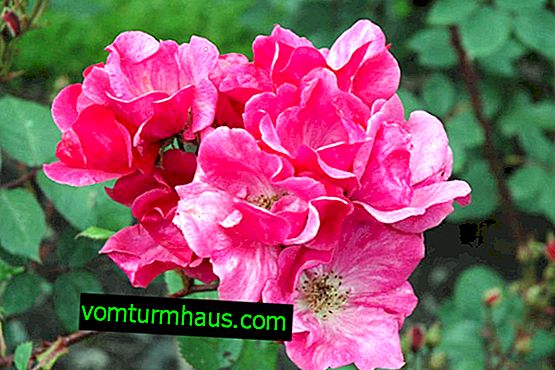
- Britain (Britannia);
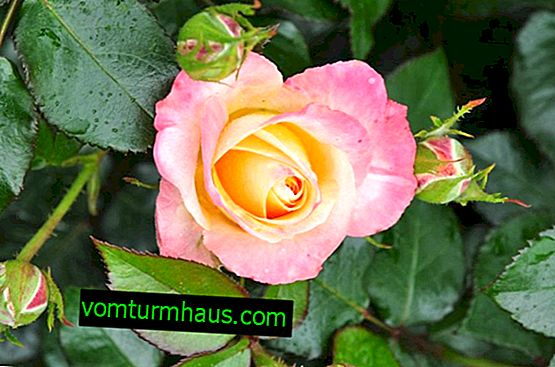
- Gloria Mundi;
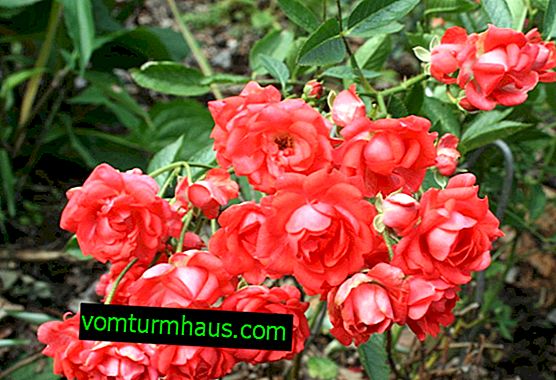
- Dagmar Spath;

- Dick Koster (Dick Koster);

- Yvonne Rabier

- Katharina Zeimet
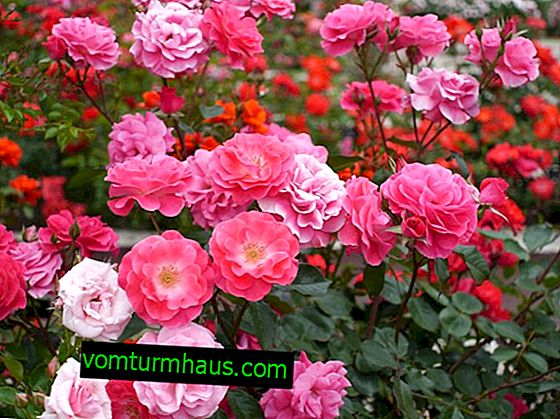
- Kate Bayer

- Lily Marlin (Lilli Marleen);

- Little White Pet;
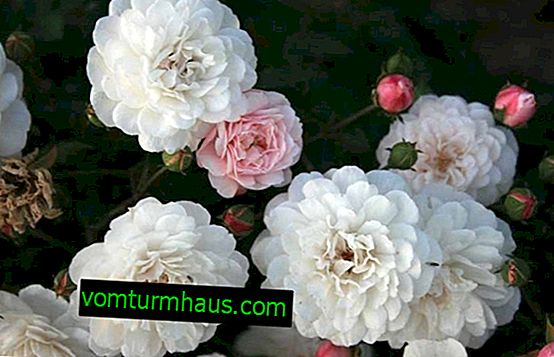
- Marchenland
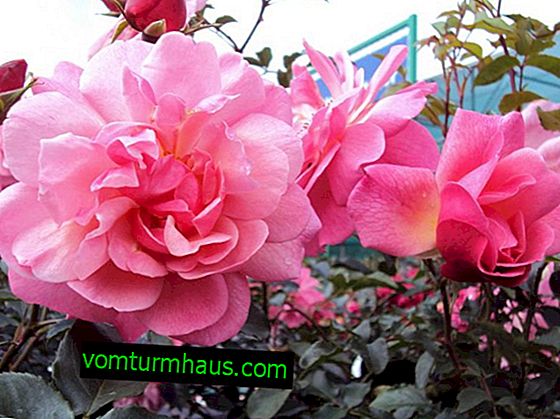
- Orleans Triumph (Triumph Orleanais);
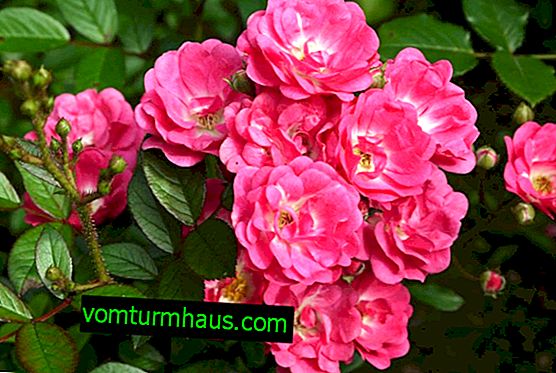
- Renansul (Renoncule);

- Sunmeid (Sunmaid);
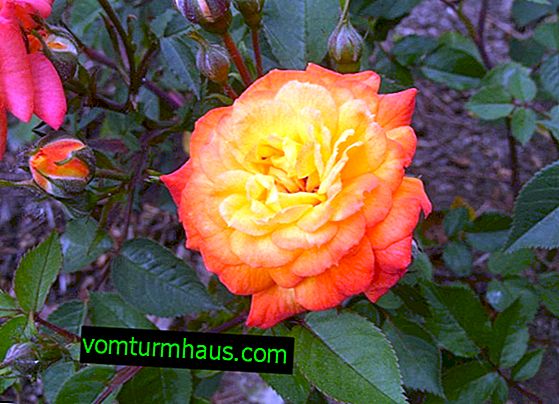
- Scarlett O'Hara;

- Snow Ballet;

- Sparkler

- Harkness

- Kharkovchanka (Kharhovchanka);

- Fairy (The Fairy);
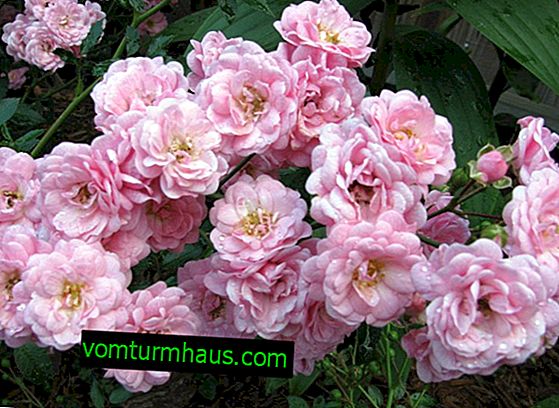
- Elizabeth Meyer
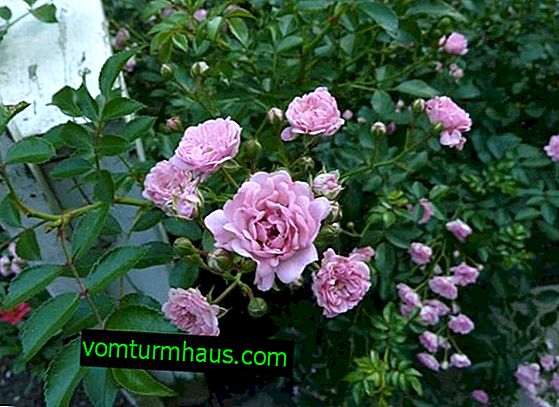
Advantages and disadvantages of roses
- Jean-Baptiste Guillot, introducing a new variety of roses, set himself specific goals that were brilliantly solved and identified the main advantages of Polyantha, namely:
- the possibility of growing in open ground;
- compactness;
- frost resistance and the ability to recover quickly in case of frostbite (the ability to root again);
- unpretentiousness to the composition of the soil;
- resistance to powdery mildew, spotting and other fungal infections;
- resistance to waterlogging of the soil;
- resistance to direct sunlight;
- lack of thorns;
- long period of continuous flowering;
- a large number of colors;
- saturated shades of flowers;
- high color fastness - both on the bush and in the cut;
- easy rooting of cuttings;
- the possibility of growing from seeds;
- the ability to easily take root on a stock of wild or park roses;
- simple trimming procedure;
- ample opportunities for use in landscape design.
- Of the shortcomings of angel roses, there are:
- a limited palette of colors (most often there are red, white, pink and orange roses, but yellow and two-tone ones have still not been brought out);
- small sizes of flowers;
- a fairly simple form of flowers (less refined and noble than some varieties of tea-hybrid roses);
- lack of saturated aroma;
- lack of self-cleaning after flowering (dried flowers must be removed, otherwise the bush quickly loses its decorativeness and becomes untidy);
- burnout of flowers, especially in bright sunshine.
Planting flowers
Polyanthus roses seedlings are best purchased in specialized stores where you can choose the right variety, as well as get detailed advice on planting and care. However, before you buy, you need to do some preparatory work.
Did you know? The most expensive rose in the world is estimated at 3, 000, 000 pounds. The variety is called "Juliet", and its author is the famous English breeder and owner of the same company, David Austin, who spent half a dozen years of his life creating a magnificent flower.
Preparatory work
A place for planting roses must be prepared in advance. It is best to do this at the end of summer, since you can’t plant a bush in the just dug up soil: after the soil has subsided, the roots of the plant can become bare, and the rose will freeze at the first frost.
Preparatory work includes:
- choosing the right place;
- cleaning the site of debris, small stones and weeds, and it is necessary to remove not only the aboveground part of the plants, but also their roots, even the smallest;
- digging the earth to a depth of about 20 cm;
- fertilizer application: organic (compost or rotted manure) and mineral (primarily phosphoric, but complex ones can also be used); Too heavy soil is recommended to lighten by adding sand, and for additional disinfection, it is useful to mix a little crushed charcoal;
- shelter: so that the prepared place for the rose does not dry out, it should be covered with a healthy green mass, for example, freshly cut grass or peat.

Technology and landing dates
Roses can be planted in autumn or spring. The first method is preferable, because in this case, before the onset of frost, the bush manages to take root quite well, without being “distracted” by the active growth of the aerial part. During spring planting, the plant externally begins to develop very quickly, but due to the fact that the fragile root system is forced to direct all forces to the growth of stems and flowering, the next winter the bush may enter insufficiently prepared. It is for this reason that roses planted in the spring freeze much more often.
Important! On heavy and waterlogged soils, polyanthus roses are planted only in autumn, because after winter such soil becomes too dense, and the forming root system does not receive enough oxygen.
The landing process involves the following actions:
- Remove the shelter from the prepared place.
- Dig a hole in the ground with a depth of 40 cm and the same diameter. Fertilizers at the bottom of the pit do not need to be applied!
- Trim the seedlings of dry, broken, damaged and thin branches, leaving only 3-4 of the healthiest. If the bush is small and weak, cut the shoots to the level of one eye, in the strong you can leave a few buds.
- Carefully inspect the roots, remove damaged processes, shorten the rest by a third.
- Place the seedling in a hole, making sure that the roots do not wrinkle and bend, but are freely located throughout the area.
- Holding the plant so that its growth point is slightly below ground level, fill the hole with the soil mixture by about 3/4.
- Tamp the ground very carefully around the seedling.
- Pour a little warm water over the bush.
- After the water is absorbed, sprinkle the soil circle with a thin layer of dry earth.

Basic rules for growing and caring
Polyanthus roses are easier to care for than other varieties of plants, but nevertheless, certain requirements for a beginner grower must be known and rigorously fulfilled.
Location and optimal conditions
All roses are photophilous plants, and Polyantha is no exception. The bush will develop best in an open, well-lit, but at the same time protected from gusty winds place (polyanthus roses tolerate drafts better than other varieties of the plant, but still this factor is stressful). In the shade, the bush stretches and loses its decorativeness, and in the absence of normal air circulation begins to hurt.
Did you know? The average life span of a rose is 30–40 years, but a bush grows in the German city of Hildesheim, whose age, according to local residents, is one thousand years.
Polyants can grow in different climatic conditions, even in harsh ones like the Urals and Siberia. The plant is not very demanding on the composition of the soil, but prefers a loose and fertile soil with a neutral reaction. However, with good care, slightly acidic soil is also not an obstacle to good flowering. Equally well, a rose can grow on both clay and sandy soil. As for humidity, dry air (not more than 50%) is more suitable for an angel rose.
Mulching
For better conservation of heat and moisture in the soil, weed control, as well as preventing attacks of slugs, caterpillars and other crawling pests, an agrotechnical technique such as mulching is used. For these purposes, it is best to use wood chips or bark, but sand and even small pebbles are also suitable. Covering the soil circle around the bush with such material, the grower provides stimulation of metabolic processes in the root system of the plant, increases the air permeability of the soil, and also gives its flowerbed a more neat and well-groomed appearance.

Watering and fertilizing
Too frequent watering "angel flowers" do not need. Depending on the air temperature, you can water the flower bed once a week or even less. The exception is young seedlings, in dry weather they should be watered every 6 days. Beginning in the second half of August, the amount of moisture introduced into the soil should be reduced so that the bush does not release new shoots, which still will not have time to form before the onset of cold weather.
Recommended Reading

If mulching has not been carried out, after watering, the soil circle must be loosened to ensure air circulation and moisture preservation in the soil, while simultaneously removing weeds that have appeared. Roses need to be fed with both organic and mineral fertilizers, alternating between them. However, it should be borne in mind that the first top dressing after planting a bush can be carried out no earlier than 12 months later.
As organic dressing, you can use chicken droppings. To prepare the working mixture, the fertilizer is first diluted with 20 parts of water, left to infuse for a week and then again diluted with water in a ratio of 1: 3. The resulting infusion bushes are watered at the beginning of the season and at the end of each flowering period. In addition to chicken droppings, roses respond well to mullein, rotted manure or compost.
As for mineral fertilizers, the scheme of their use looks like this:
| Type of dressing | Drug example | Application Time |
| nitrogen | "Urea", "Ammonium nitrate" | at the beginning of the season; after the first wave of flowering |
| complex (phosphorus-potassium-nitrogen) | Ammofoska, Nitrophoska, Superphosphate | starting in July - 2-3 times per season |
Pruning
Pruning roses is a must for any variety of this plant. For the Polyantha group, this procedure has its own characteristics. So, to ensure high branching and, consequently, abundant flowering, the young bush is radically shortened immediately after planting, leaving 2-3 eyes for short shoots on each shoot and 1-2 eyes for tall varieties. In addition, you need to remove all old (dry, woody or darkened), diseased and weak shoots, cutting them off at ground level.

Important! The weaker the rose, the stronger it needs to be cut. But strong and tall varieties are not recommended to be drastically shortened, because after this procedure the plant begins to grow intensively, which can lead to later and less abundant flowering.
Shelter for the winter
Polyanthus roses are frost-resistant plants and can tolerate lowering temperatures to -15ºC. Nevertheless, for the winter they are recommended to be covered. In regions where winters are not too severe, a bush with enough light shelter from fallen leaves, peat or coniferous paws, however, if frosts are expected to be severe, especially in the absence of snow, the issue of protection should be taken more seriously. In this case, in addition to shelter, the bush should also be hilled to a height of 10 cm.

When covering roses, one should be guided by the following rules:
- The procedure is carried out in dry weather.
- Only dry materials are used for shelter.
- Shelter is preceded by sanitary pruning.
- The insulation layer needs to be well and reliably fixed, otherwise the structure will collapse under a gust of wind.
Important! Polyanthus roses, rooted from cuttings, in the early years are quite weak, so they need to be covered carefully for the winter, otherwise they may die.
Breeding
One of the most valuable qualities of the polyanthus rose is that it propagates very easily, and for this, almost all methods can be used - from planting seeds to various vegetative methods (cuttings, layering, grafting, dividing the bush):
- The seeds of the "angel flower" can be purchased at the store or collected independently, for this it is enough just to open the fruit that is not fully ripened. Before planting, the seeds must undergo stratification (a procedure that mimics the wintering of seeds in the soil). To do this, the prepared material should be laid out between two layers of a damp cloth, wrapped with polyethylene and placed in the refrigerator (vegetable compartment). From time to time, the fabric needs to be ventilated and additionally moistened. You need to start the procedure at the beginning of winter. Around February, the seeds should “hatch” (let out the first thin root). As soon as this happens, they need to be planted in a small pot and put in a warm, well-lit place. When a young plant grows stronger, it can be planted in open ground. This is best done in the fall.
Video: Rose propagation by seeds
- To propagate Polyantha cuttings in early summer, a lignified shoot is cut from the plant and divided into segments with one or two buds on each. Then the stem is treated with a rooting agent (Kornevin, Heteroauxin, etc.), buried in a mixture of peat and sand at an angle of 45 °, covered with a jar or plastic bottle and placed for rooting in a warm and slightly shaded place. You can plant such a stalk in open ground next spring, while during the winter the plant should be in a cool room at a temperature slightly above zero.
Video: propagation of roses by cuttings
- To get several plants from one bush, you need to carefully dig a rose from the ground and, without clearing the earthen lump completely, with a clean and sharp knife, cut the root together with the aerial part into two or three parts. Each obtained fragment should be planted in the usual way, having previously dusted the cutting site with crushed charcoal for disinfection.
Important! It is not recommended to decorate lawns with roses, since the presence of a decorative bush makes it difficult to cut grass. In addition, a neat and well-groomed lawn is a self-sufficient design element, so the tall flowers on it look alien and cause a feeling of harmony.
Pest and Disease Control
Полиантовые розы считаются одними из самых выносливых представителей рода Шиповник, но это вовсе не означает, что его никогда не поражают болезни и не атакуют вредители. Ниже приведены наиболее часто встречающиеся заболевания «ангельского цветка», их основные признаки, причины появления и способы лечения.
Чёрная пятнистость:
| Symptoms | тёмные пятна на лицевой стороне листовой пластины; засыхание и опадание поражённых листьев |
| Causes | избыточная влажность воздуха при относительно невысокой температуре (+19…+25ºC) |
| Меры профилактики | опрыскивание отваром крапивы или плюща (применяется в случае затяжных дождей) |
| Меры борьбы | обработка препаратами на основе пенконазола, триазола или манкоцеба («Скор», «Топаз», «Ридомил Голд», «Профит»); опрыскивание «Фитоспорином», «Тиовитом Джет»; использование иммуностимуляторов («Эпин-Экстра», «Циркон»). |

Мучнистая роса:
| Symptoms | похожий на паутину белый налёт, покрывающий листья; деформирование листьев; опадание бутонов |
| Causes | заболевание вызывает грибок, который очень быстро распространяется при любой погоде и в любых условиях, ему просто достаточно попасть на участок |
| Меры профилактики | своевременное внесение фосфорно-калийных удобрений |
| Меры борьбы | опрыскивание бордоской жидкостью; обработка мыльно-содовым раствором |

Ржавчина розанная:
| Symptoms | коричневые или жёлтые пятна на листьях; растрескивание коры; искривление ветвей |
| Causes | грибок часто заносится на розу с дикорастущих кустов шиповника или уже присутствует на новоприобретённом растении; высокая влажность способствует распространению болезни |
| Меры профилактики | опрыскивание бордоской жидкостью по следующей схеме: двукратная обработка в апреле с перерывом в 3 дня, в дальнейшем — 2 раза в месяц |
| Меры борьбы | обработка препаратами «Токсин-М» либо «Скор» |

Из вредителей полиантовой розе больше всего досаждают:
| Название паразита | Symptoms | Меры борьбы |
| Aphid | заметна невооружённым глазом (крохотные насекомые, высасывающие сок из стеблей и листьев) | удаление наиболее поражённых участков растения; опрыскивание раствором полыни; обработка инсектицидами против сокососущих насекомых («Танрек», «Биотлин», «Калаш» и др.) |
| Розанная цикадка | видна невооружённым глазом в нижней части куста; на листьях проявляется в виде белых пятен | обработка насыщенным мыльным раствором |
| Spider mite | жёлтые пятна на листьях; паутинные нити, тянущиеся от листа к листу | удаление поражённых частей; обработка настоем чеснока, тысячелистника или хвоща |
| Розанная листовёртка | скручивание листьев (обычно происходит в начале лета) | удаление поражённых частей; обработка инсектицидом («Кораген», «Сезар», «Липидоцид», «Либер», «Конфидор» и др.) |
| Розанный гнильщик | мелкие дырочки на листьях | удаление поражённых частей; обработка настоем полыни |
Use in landscape design
Компактные, выносливые и неприхотливые, к тому же долго и обильно цветущие полиантовые розы со времён своего появления являются настоящей находкой для ландшафтных дизайнеров. Однако, если крупные кусты парковых и чайно-гибридных роз обычно стараются разместить перед входом в дом или в центральной точке участка, чтобы яркие цвета, благородные формы и тонкий аромат этих растений подчёркивали вкус и статус хозяев, то небольшие, но пышные полиантовые розы чаще используются как живописное окаймление дорожек, вокруг беседок, а также в отдалённых и романтических уголках, где их нежность, романтичность и сентиментальность окажутся гораздо более кстати.

Полиантовые розы как нельзя лучше подходят для оформления так называемых рабаток — узких прямоугольных клумб, располагающихся перед домом или вдоль забора. Композицию ярким и многочисленным красным или розовым цветам, шапкой покрывающим невысокие кусты, могут составить синие либо белые оттенки полевых цветов — васильков, лаванды, шалфея, дельфиниума, колокольчиков, ириса, лилий.
Learn about the smallest varieties of roses.
Polyantha очень красиво смотрится в отдельных контейнерах или кашпо, которыми можно украсить не только беседку или вход в дом, но и открытый балкон или веранду в обычной городской квартире, привнеся в неё элементы ландшафтного дизайна.
Полиантовые розы обладают огромным количеством неоспоримых достоинств. Их цветы не так изысканны и ароматны, как у чайно-гибридных сортов, однако во дворе частного дома или на дачном участке гораздо ценнее растения неприхотливые, лёгкие в уходе, а главное — отличающиеся практически непрерывным и очень обильным цветением. Именно этими качествами славится Polyantha, недаром этот вид роз в последние годы приобретает всё большую популярность.


























